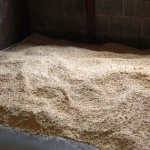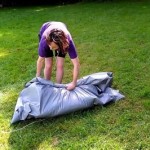When Can I Put My Bedding Plants Outside?
Bedding plants add a splash of color and vibrancy to any garden, but knowing when to put them outside can be tricky. Planting them too early can expose them to frost, while waiting too long can stunt their growth. Here are some essential aspects to consider when deciding the optimal time to transplant your bedding plants outdoors.
Last Frost Date
The last frost date is the key factor in determining when to put bedding plants outside. This date marks the average last day of frost in your area. You can find this information from local weather stations or online resources. It's crucial to wait until after the last frost date to avoid exposing your plants to potentially damaging temperatures.
Plant Hardiness Zone
Plant hardiness zones are another important consideration. These zones indicate the average minimum temperatures that plants can tolerate. When selecting bedding plants, check their hardiness zone and make sure it matches or exceeds your local zone. Plants can be planted outside earlier in warmer zones.
Soil Temperature
Soil temperature plays a significant role in root development. Most bedding plants prefer soil temperatures of 55-60°F (13-16°C). Check the soil temperature before planting by inserting a soil thermometer several inches deep. If the soil is cold, consider delaying planting or using row covers to protect the plants.
Plant Size and Maturity
The size and maturity of your bedding plants will also influence the optimal time for planting. Larger, more established plants can withstand cooler temperatures than smaller, younger ones. If you have limited space, you can start seeds indoors and transplant the seedlings outside when they reach a suitable size.
Acclimatization
Before putting bedding plants outside, it's essential to acclimatize them gradually to the outdoor environment. Start by placing them in a shaded area for a few hours each day, gradually increasing the duration and sunlight exposure. This process helps the plants adapt to the changes in temperature and sunlight intensity.
Other Considerations
In addition to these essential aspects, consider other factors such as local weather patterns, expected rainfall, and the specific needs of your plant varieties. Pay attention to any unusual weather forecasts and be prepared to move your plants indoors or cover them if necessary. Remember, it's always better to err on the side of caution and wait a little longer than plant too early and risk frost damage.

How To Grow Petunias Bbc Gardeners World

Top 10 Winter Bedding Plants Thompson Morgan

24 Can T Kill Flowers For Beginners Easiest To Grow In The Garden

7 Ways To Protect Your Plants From A Sudden Frost

Flowers That Can Take Full Sun All Day Long In Summer

The Best Low Maintenance Plants For Outdoor Pots And How To Take Care Of Them Growing Family

Guide To Raised Beds Plans Timing Tending Gardener S Supply

The Best Low Maintenance Plants For Outdoor Pots And How To Take Care Of Them Growing Family

4 Ways To Use A Cold Frame Finegardening

The 8 Best Trailing Plants For Container Gardens Ted Lare Design Build








